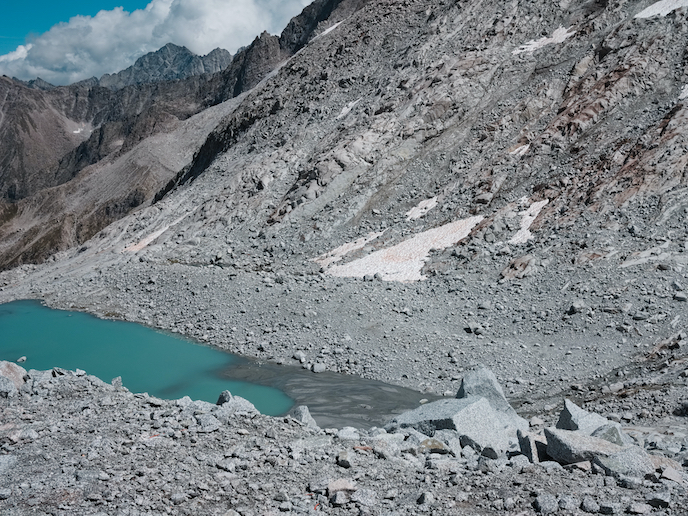New modelling suggests that 92 % of Alpine glaciers could disappear by the end of this century
Water supplies in the European Alps are being threatened by receding glaciers, an effect caused by climate change. Water management in the region demands accurate data that captures a dynamic situation and can forecast likely scenarios. The CHANGE project, supported by the Marie Skłodowska-Curie Actions, has discovered that Alpine glacial response to climate change will be highly variable – information that is crucial for evidence-based policymaking. In a paper submitted for publication, the team outline their use of glaciological field techniques and numerical modelling of environmental equilibrium line altitudes(opens in new window) (ELAs). This led to the suggestion that climate change will result in the loss of between 69 % and 92 % of Alpine glaciers by the end of this century. “Until their disappearance, glaciers will continue to contribute to the hydrology of their individual basins, but in more varied ways. Most are likely to contribute more to run-off in the short term but, over time, the run-off will decline. Others will sharply decline in run-off and some may already have passed their peak run-off,” explains project coordinator Neil Glasser from Aberystwyth University(opens in new window), which hosted the project. CHANGE also found that the degree of permeability of the bedrock plays an important role in how meltwater is stored and then routed beneath the glaciers.
Measuring glacial health
The team developed a new approach to simulate scenarios for the future ELA – the altitude at which accumulation and ablation of water on a glacier are equal and so can be thought of as balanced. They started by analysing the Randolph Glacier Inventory(opens in new window) to locate and identify individual Alpine glaciers. Researchers put these into a geographic information system(opens in new window) and applied different climate change scenarios to forecast the impact of climate change on the ELA of all the Alpine glaciers. The scenarios were based on Representative Concentration Pathways from the EURO-CORDEX project(opens in new window) which projected different emissions scenarios. The results cover the entire European Alps region, based on 200 years of climate records and forecasts covering 1901 to 2100. The team also used a separate numerical glacier model to analyse the influence of different ice-bed geology on the subglacial drainage system and glacier motion. They ran numerical experiments looking at varying bedrock permeability to see how the water was stored, and how it flowed under the glaciers over a year. The model was first tested using a theoretical glacier surface, then modified and run with empirical data. Lastly, fieldwork conducted at two sites with the help of drones allowed the team to perform detailed geomorphological analyses of glacier forefields(opens in new window). “While we still have to analyse the results, we anticipate that they will support our modelling of the characteristics of subglacial groundwater flow. This, we believe, will show that the flow can remove the seasonal variation of glaciers on a carbonate bedrock, such as well-karstified limestone(opens in new window),” says Glasser.
Local to global implications
CHANGE’s findings provide insights relevant to similar mountain glaciers globally. The results contribute to a better understanding of how glaciers in the European Alps are responding to a changing climate, and of their effect on river run-off, ecosystems, tourism and hydroelectric power generation. “As the biggest impact of receding glaciers is on local populations, we made and exhibited 3D models at the EuroScience Open Forum in Trieste(opens in new window), Italy to illustrate glacier changes. Hopefully these will become a permanent exhibition,” adds Glasser.







